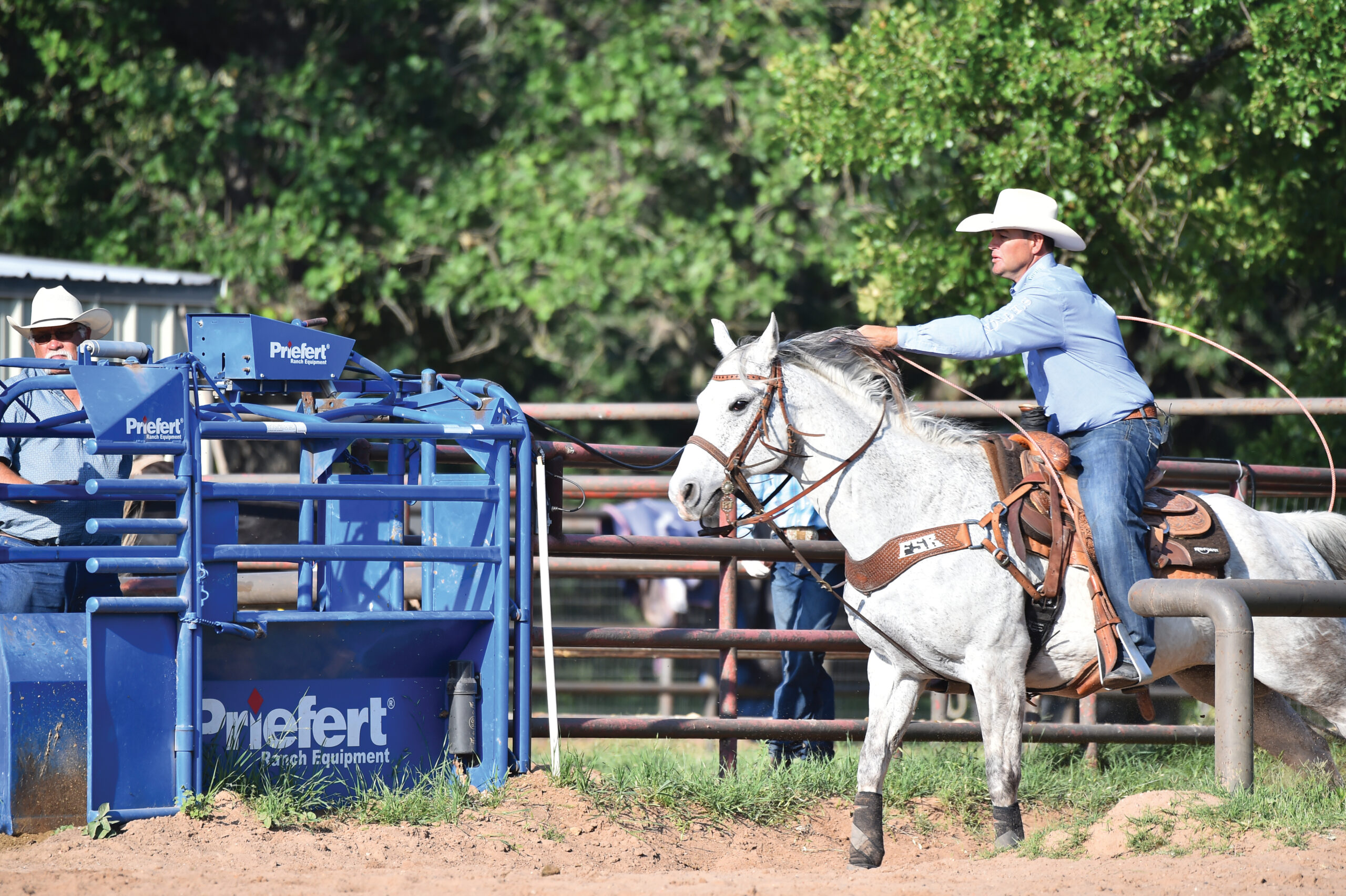Clay Tryan talks tips on getting some solid team roping practice in by yourself:
Heading Swing Check
I want to have a good swing to make it easy to catch both horns. I want my elbow at the same height as my shoulder, with my hand outside my elbow when I’m swinging it. I want it to the inside of my elbow and more toward the tip of the left horn when I come across the horns to finish. I deliver my loop with my hand flat, and that will keep my loop flat across the horns.
READ MORE: Maintaining the Head Horse with Clay Tryan
Horseback Smarty Drill
I want to throw good head loops on the Smarty when I’m horseback, even if I don’t have anyone to rope with at the house. What I mean by a good head loop is making sure my tip is in the right spot, and my swing is in the right spot with my right hand outside the right horn finishing past the tip of the left horn.
To speed up, I back my horse up 10 to 15 feet and walk to the Smarty, roping it on the gain. That will help if you are trying to rope faster, or if you have trouble roping steers when you’re going faster than the steer. At Salinas, it’s a 35-foot score, the steer is way ahead of you and, by the time you get to them, you’re going faster than the steer. (In a lower-numbered roping, if you’re riding a fast horse on slow cattle, you will also face this problem.)
WATCH: Clay Tryan’s Tips, Drills, Mental Game and More on Roping.com
Live Cattle
If I don’t have anybody to heel for me, I rope and follow them out unless I’m on a horse that wants to run off or run too free, then I steer stop. Most of my horses do rate a little bit, so I think it’s really good to head by yourself. It’s hard with fresh steers—you need older ones that won’t stop—but it’s really worth it to get the practice you need on your horse and yourself.
I train myself to keep going forward. Not forward in the saddle, but I keep my horse going forward. I keep my momentum going forward. I’m not trying to run my hand up their neck, just sit still and squeeze.
If I have a horse that wants to be too ratey, I might throw and speed up and try to keep up with the steer. If I have one on the money, I might just lope along with the steer and then slowly let my rope go. If I have one that’s chargy, I might dally and stop the horse.
I will run close [to some,] and I will reach on some and be mid-range on [others]. If I’m working on my horse, I might just run close on all of them. If I’m needing to work on me, I will rope from different spots, whether it’s close or a long ways back or in the middle. It changes every time for me. Maybe I’m not with the horse very good or he’s not running hard enough. To me, it’s a lot of common sense [and asking questions.] What is your horse doing? Make your horse do what he doesn’t want to do.











